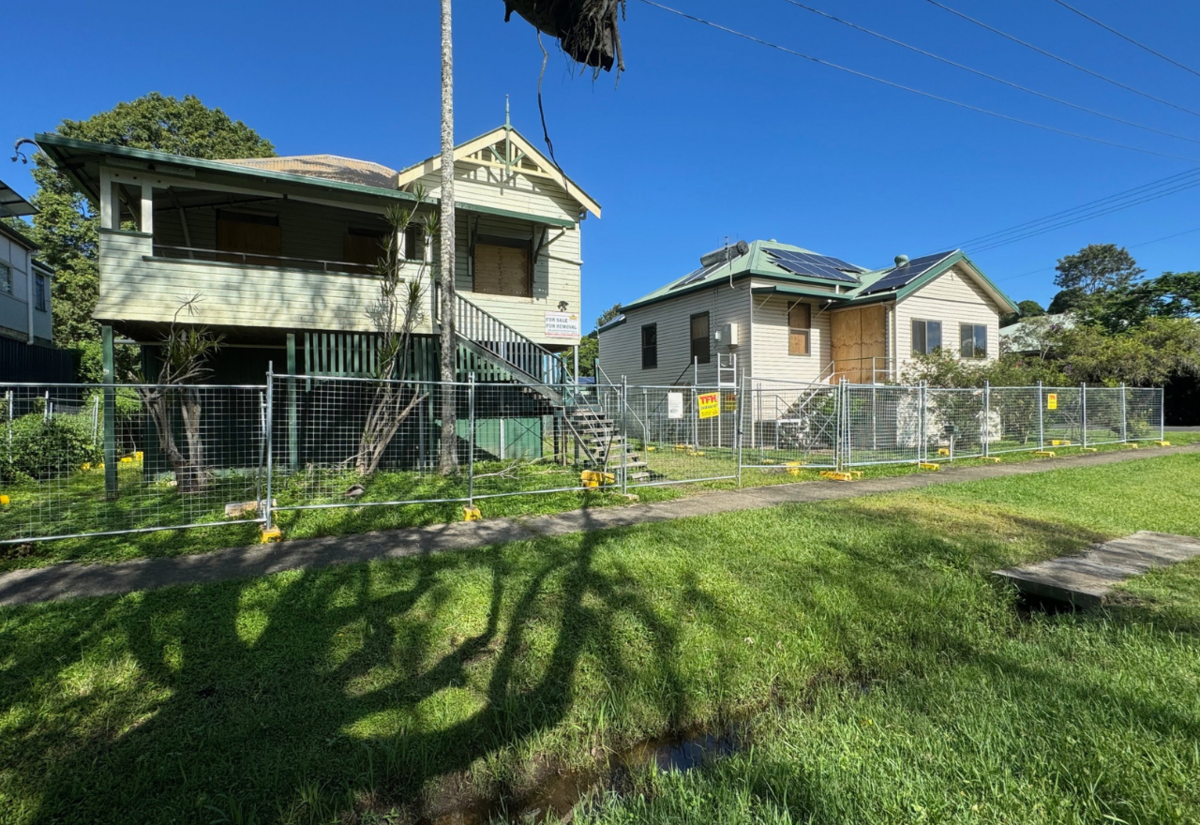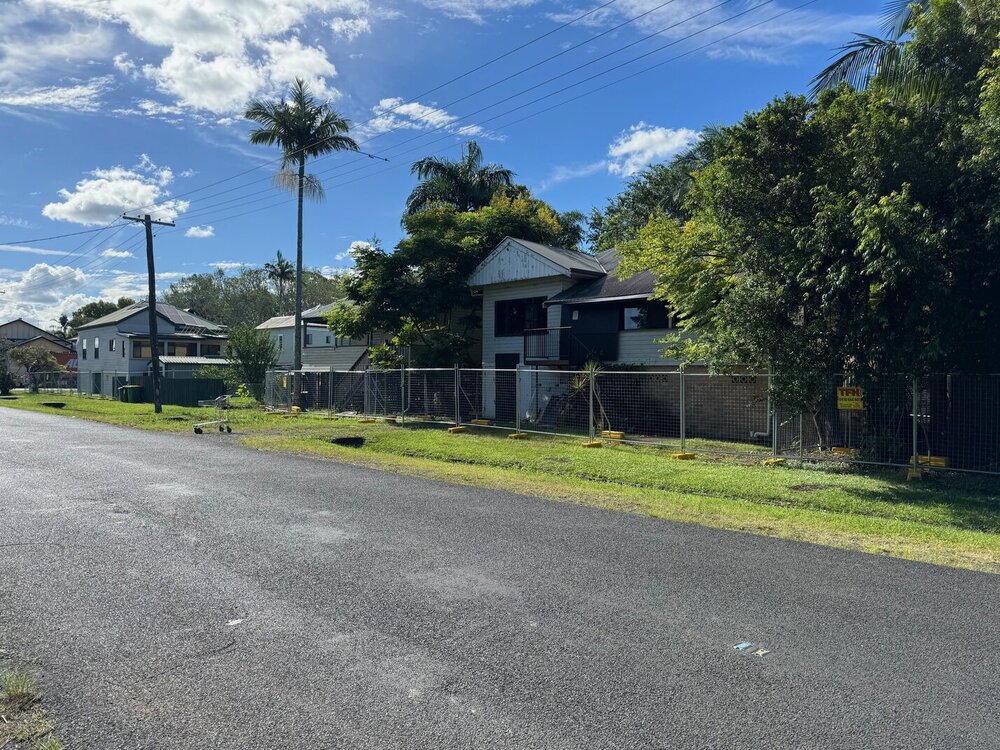Rural landholders hold the key to Lismore's housing crisis
Simon Mumford
08 October 2024, 7:02 PM
 Some NSWRA owned buyback houses on Cathcart Street in the CBD
Some NSWRA owned buyback houses on Cathcart Street in the CBDLismore residents, especially those who were flood-affected in 2022, have heard the term 'patience' a great deal in the last two and a half years. State legislation has had to be changed as funding agreements were written, the NRRC/NSWRA were established and the relevant Resilient Homes and Resilient Lands programs were announced.
The housing crisis is nationwide, not just in Lismore and the Northern Rivers. However, it has been made worse by the removal of hundreds of rental homes in South, North and East Lismore and the CBD because of the big flood.
The answer to providing the quickest solution to our housing crisis may lie with our rural landholders.
Graham Snow, Lismore City Council's Head of Statutory Planning, said regional NSW has traditionally had a regressive land policy that limits the amount of housing density in rural areas.
"With rural zone land, you'll find in the local environmental plans for regional New South Wales councils that there's this notion of dwelling entitlements. Dwelling entitlements stem out of what were rateable properties back when local ordinances came in in the fifties and sixties. So, unless you have over 40 hectares (100 acres) lot size, then basically, you've got whatever the dwellings were at that time.
"We've done a rough analysis, and we've got over 5,500 lots in the Lismore LGA that are rural zones, and over half of them have a capacity to have a dwelling because they don't currently have a septic system or dwelling on them.
"We went and asked the state government if we could be allowed to be given an exemption where council officers could entertain looking at moving the buyback dwellings that the state has purchased, some 700 or so, from the 2022 floods and have them be able to be distributed on some of these vacant lots.
"The state has written to us and agreed, and they've given us a two-year window within which people can make development applications to relocate the new RA (Reconstruction Authority) buyback dwellings to these rural zone lots."
"I think it's safe to say we're the only regional LGA in New South Wales that's doing this."
Basically, this is a call to rural landowners who have under 40 hectares and are wondering what to do with their property to consider putting a dwelling or two there because some rural landholdings consist of more than one lot.
"Our local environmental plan allows dual occupancies on rural zone lots. So, if you want to snag a house or two from the RA and relocate them to a rural piece of land, you've got the capacity to do that in Lismore."
This may include macadamia farm owners who have a few thousand trees and are finding it difficult to make ends meet to put a couple of buyback houses on their property and rent them out for additional income as well as to increase the value of their land.
"This isn't about subdivision to create lot sizes or anything like that," Graham added, "Our analysis showed that we've got almost 3,000 lots that are basically just sitting there already created without any dwellings on them."
The reason this opportunity can increase housing quickly is through Council's Fast Track process for relocating houses.

(Buyback houses in Ewing Street in the CBD)
"You are looking at roughly a week for approval through council to take one of these buyback dwellings and get it relocated. And obviously, if there are embellishments that you need to do like a septic system, which is a must, but then also maybe some clearing for bushfire or etcetera. Those are things that you'll have to do through the conditions of consent that you get from council.
"We've also waived all local government fees for relocating houses. So that was in the fees and charges that the councillors adopted back in June. So there's literally no charge from council for you doing this. And we've also got a pool of up to $1.2 million where we have $15,000 grants for people who are doing this to provide housing. So, once you get your occupation certificate, you put the house back together again, and it's all signed off to live in, you can also end up getting a grant from council from a limited pool of funds that we have available."
Graham confirmed that this process could involve bringing in a buyback home from other LGAs.
"This a pretty simple solution. We looked at what was in existence in terms of land. It takes an inordinate amount of time to bring land to market to create new lots, and obviously, urban lots are sewered and all the rest of it. But for the rural land that's already been sitting there for the better part of the last 50 or 60 years and hasn't had a house on it. Now is the time to take a look at it again.
If you are a rural landowner who satisfies the above criteria, you cannot sit and wait too long before making a decision.
"This is a two-year window for us to entertain accepting DAs. Once you get a DA, you've got a five year currency period to act on it. So, sooner is better because obviously the houses were flood-affected, and they're in flood areas. But also, we've got a limited pool of funds for that occupation certificate if you want to take advantage of that. Once that runs out, that runs out."

